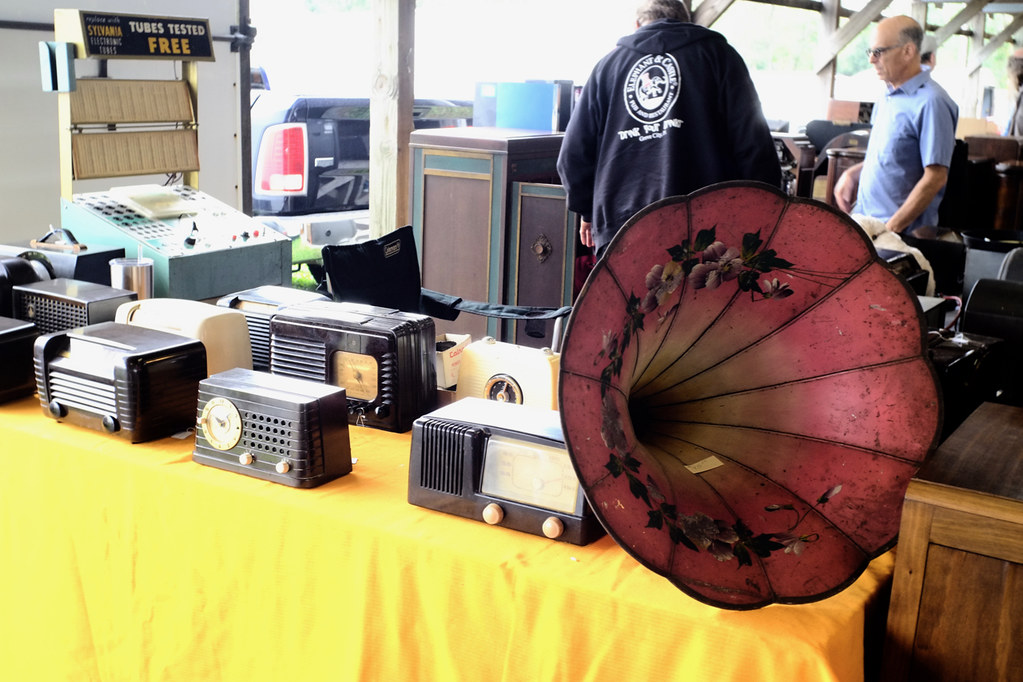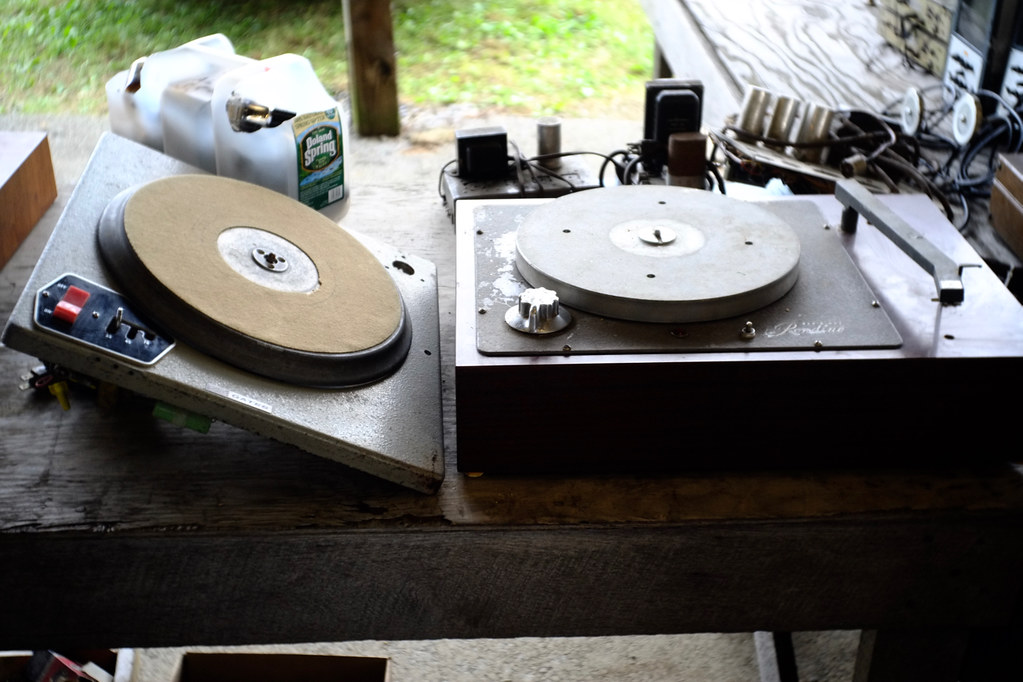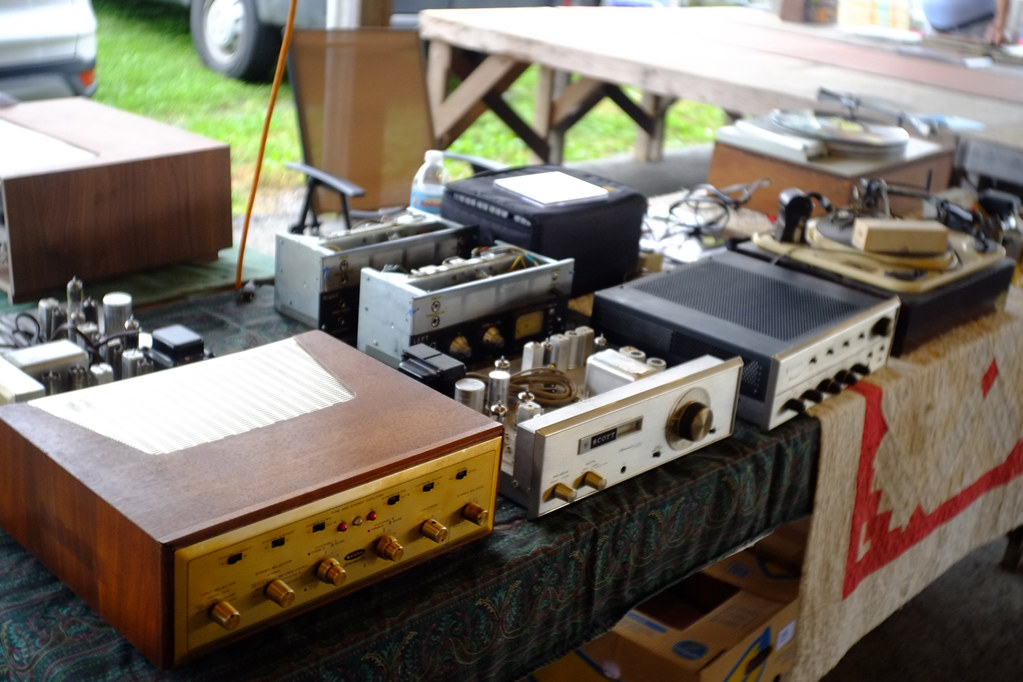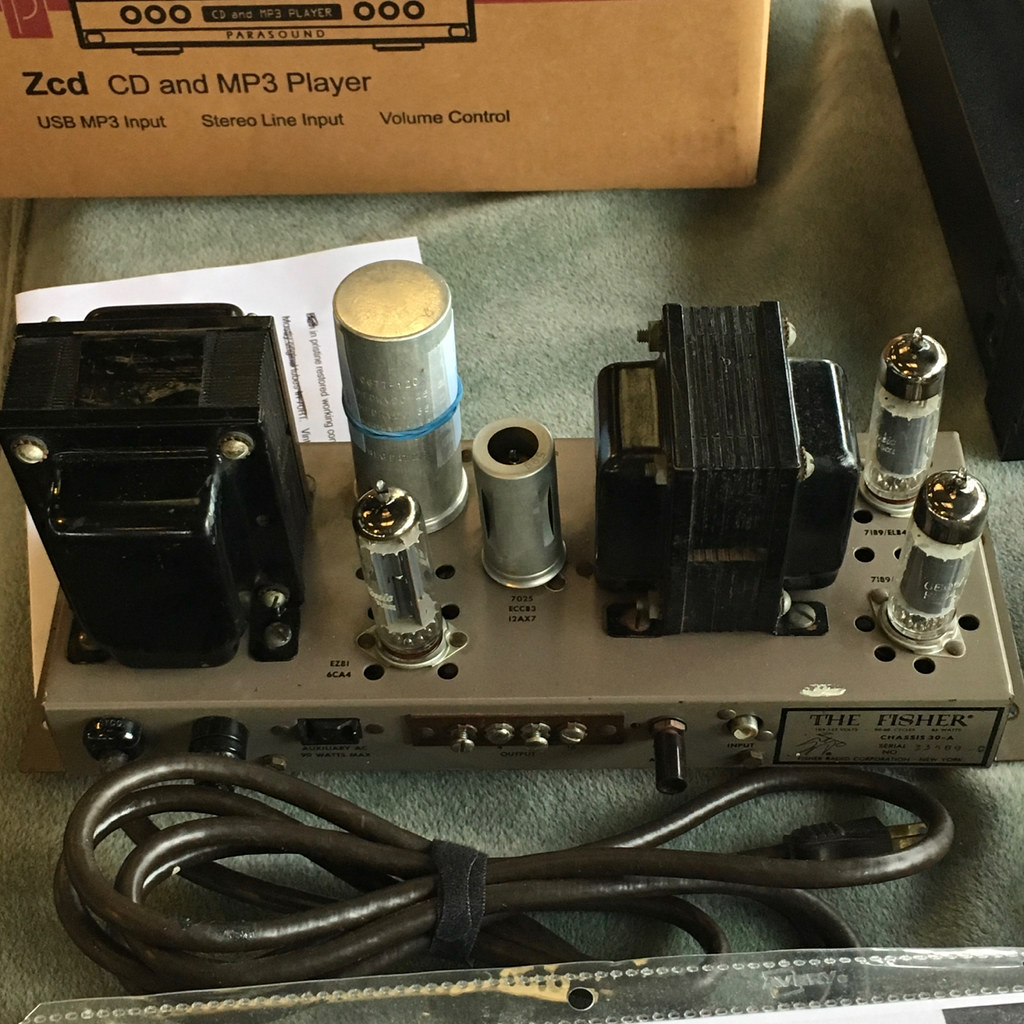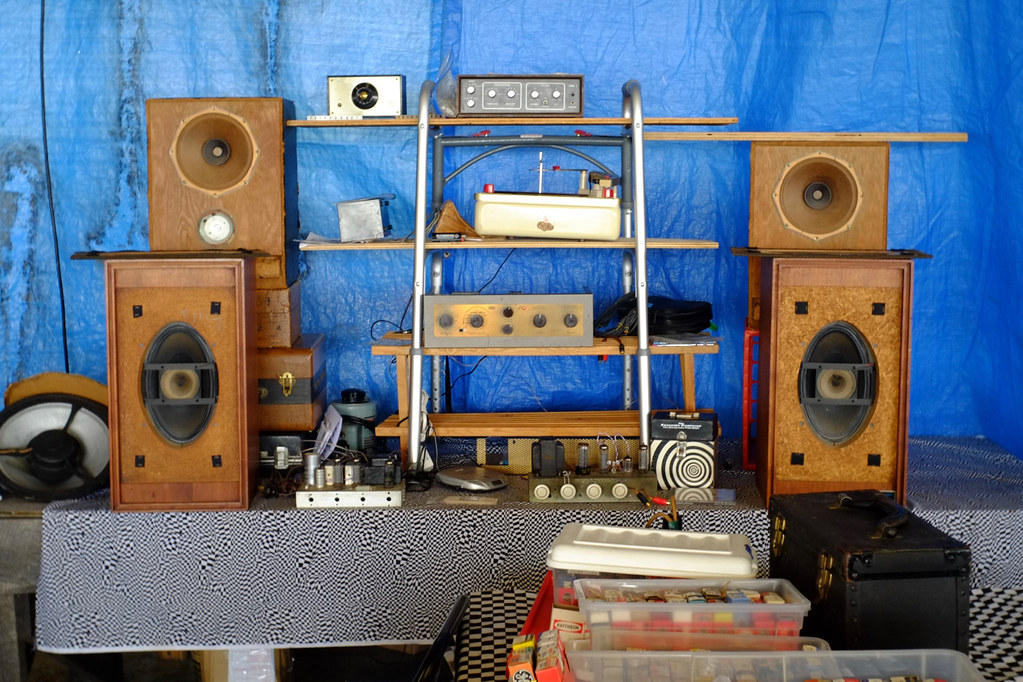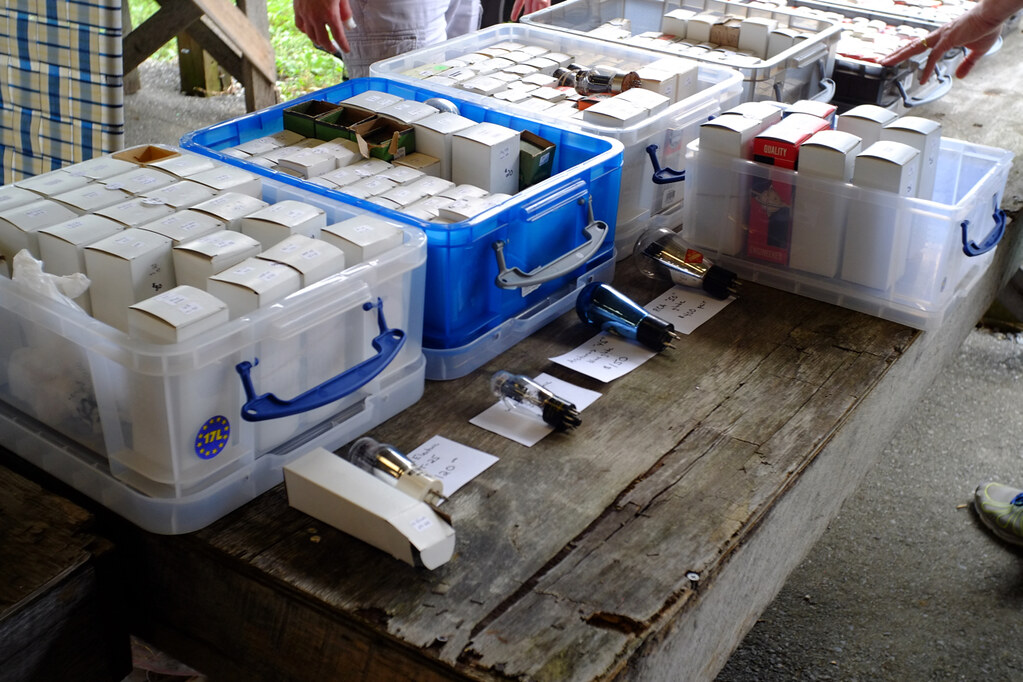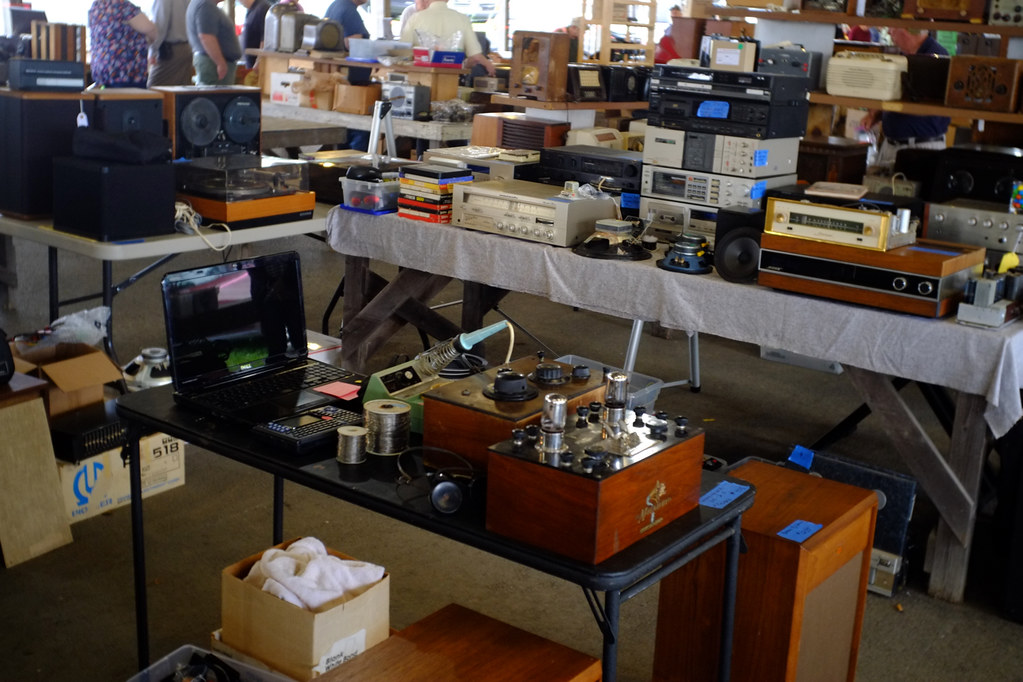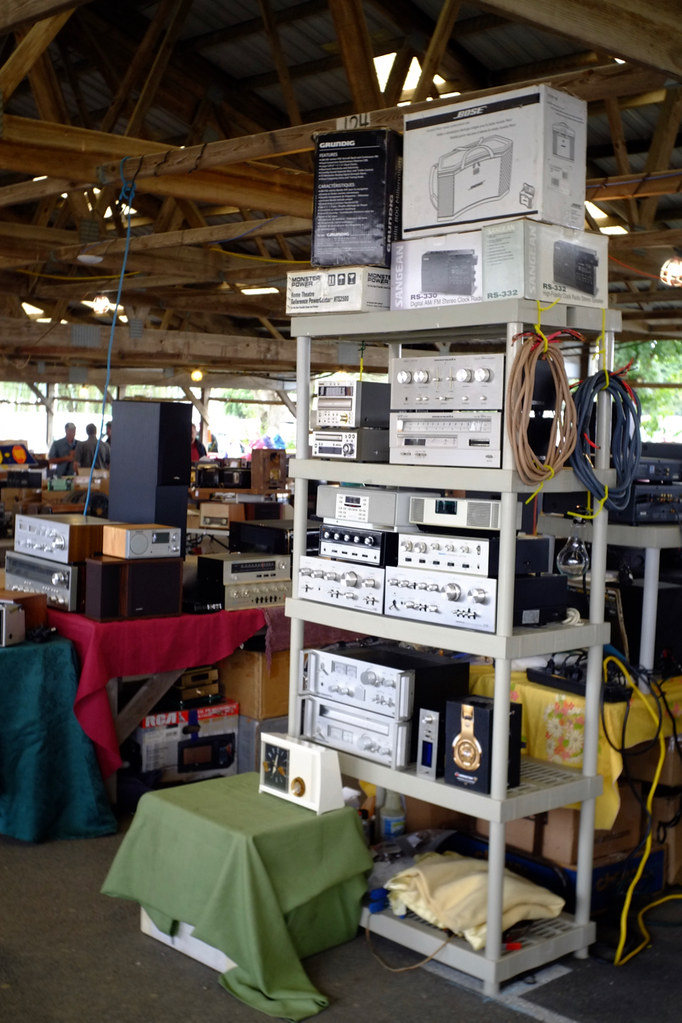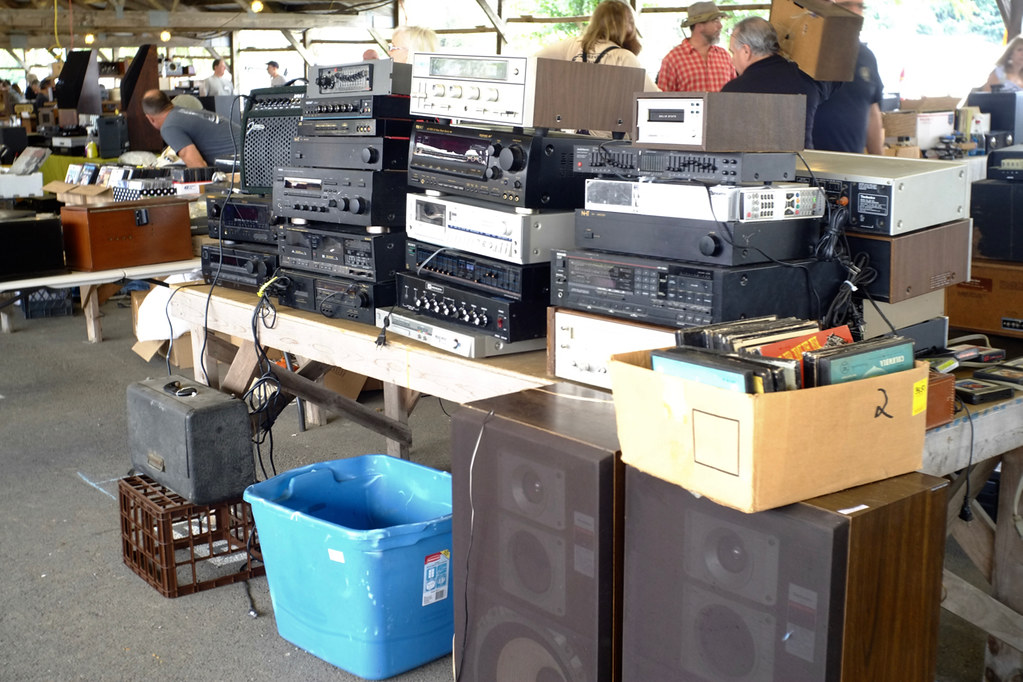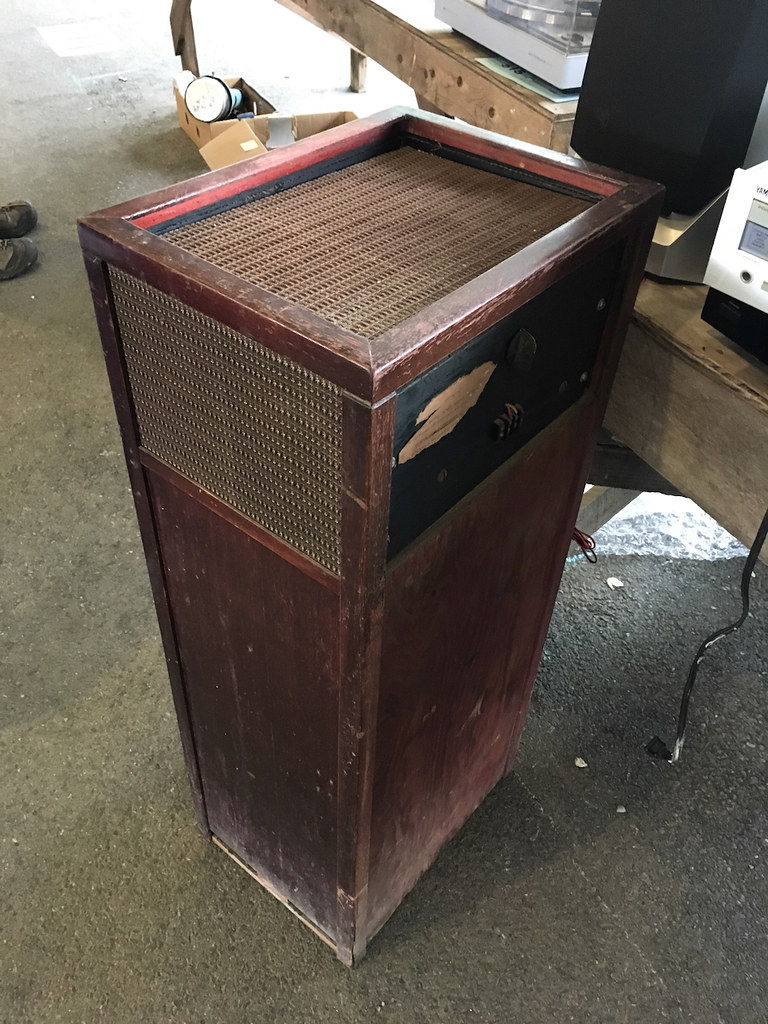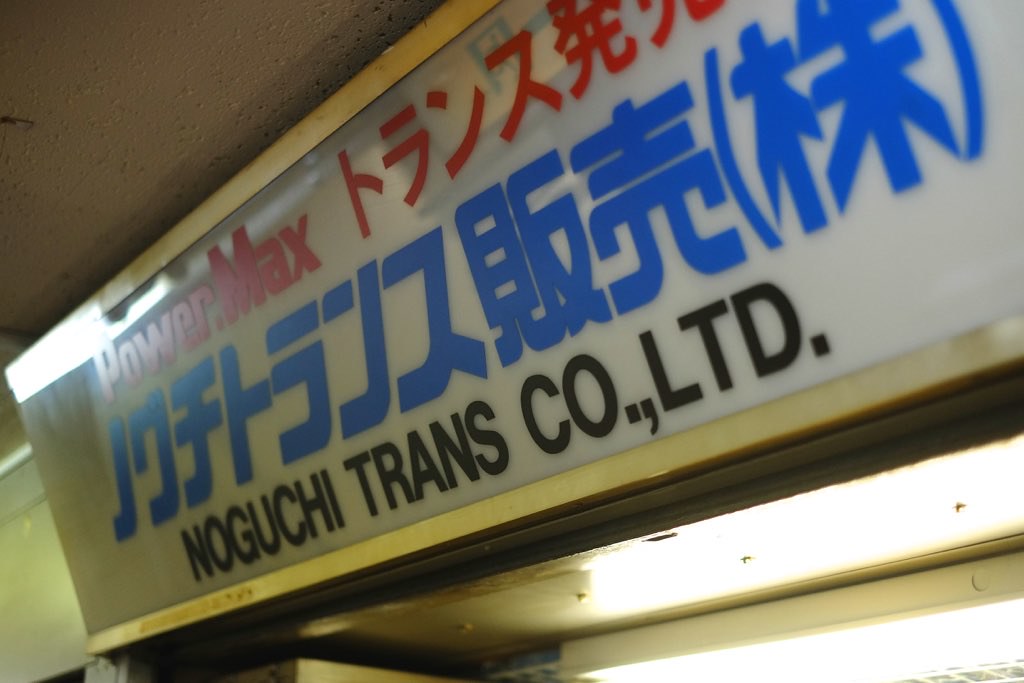Each unit has its own unique approach to direct drive turntable design and was available either as an integrated unit (with tonearm) or as a plain motor unit. The Denon DP1250, Kenwood KD500 and JVC QL5 are mid-priced models from the late 70s, while the Sony TTS2500 was a first generation early 70s top of the line direct drive unit designed to compete with the original Technics SP10, which, unfortunately, was not within my budget. 😞
Turntables
 |
| JVC QL5 |
JVC introduced the world's first quartz locked turntable in 1974. The QL5 employs quartz locked circuitry to control its 12 pole 24 slot DC type motor. Its jet black plinth is made out of heavy particle board. The motor unit was also sold sans tonearm as the QL50.
 |
| Kenwood KD500 |
Instead of the complex electronics found in the Denon, JVC and Sony, the KD500 uses a relatively simple servo circuit referenced to a frequency generator modulating an 8 pole 24 slot brushless DC motor. This turntable developed a following in the late 70s due to the use of a highly inert and heavy synthetic marble plinth.
This particular unit was loaned to me by my buddy Ding. He's had it stored for many years. It ran way too fast at first turn on so I replaced these four bulging capacitors immediately.
 |
| Denon DP1250 |
 |
| Sony TTS2500 |
The Sony TTS2500 is the motor unit of the worldwide bound Sony PS-2250/2251. Just like the Denon, it also uses an AC motor regulated by a servo circuit that is claimed to be practically cog-less in operation. This JDM (Japanese Domestic Market) model requires a 100V step down transformer. The half-finished laminated plywood plinth was DIY'ed by yours truly.😎
Tonearms
In a typical audiophile shootout these turntables would have been fitted with the same tonearm/cartridge combination and plinth. But this was not practical since I wanted to test under real world conditions. So to satisfy JE Labs' retro-centric streak,😉 for the Denon and Sony, I chose period correct gimbal bearing type tonearms that are known to perform on a similar musical level as those supplied with the QL5 and KD550.
 |
| JVC QL5 Tonearm |
 |
| Kenwood KD550 Tonearm |
 |
| Rega R200 |
 |
| Grace 540L |
I've always had a soft spot for Grace/Shinagawa tonearms ever since the Grace 707 opened my ears that fine quality tonearm design produces nice sounds. This Grace G540L has similar mass to the other three above. The lack of a cuing device and anti-skate betrays its pro-application heritage. It is the oldest of the bunch making it the perfect partner for the TTS2500.
Cartridge
 |
| Denon DL103R |
Time travel to the 70s
Without hesitation, I would choose any of these turntables over the 3-point suspension belt drive turntable I used and tweaked to the max in the 80s. The direct drive system has the sure-footed speed stability which eventually lured me to the TD124 in the late 80s. I should've jumped at bargain priced top of the line direct drives to play with in the 90s...alas, hindsight is 20/20.
Since direct drive solved the ills of wow and flutter, and noise which plagued the belt and idler drive system respectively, there should be minimal difference in the way any direct drive motor unit should sound, right? Not quite...
 |
| Denon AC motor (top) Kenwood DC motor (bottom) |
My most surprising discovery after living with all these turntables this past year was the difference in sound between the motors that power them. The DC-motor-powered JVC and Kenwood consistently sounded analytical, cold and forward, akin to a digital source, while the AC-propelled Denon and Sony were characteristically more laid back and warm, just like what I associate with analog sound.
However, to put things in perspective, the Sony still outperformed the other three direct drives in key musical aspects. In particular, there is a "hardness" and loss of composure in complex musical passages that prevailed on the three units with the Sony exhibiting only the very least amount.
 |
| Sony TTS2500 + Stax UA-3NL |
Still, the TTS2500 could not eclipse the performance of the 301 or the TD124s. But it is the only direct drive in this group to come close in mimicking the stately authority of the esteemed idler driven classics.
For this achievement, I crowned the Sony with a 12" Stax UA-3NL tonearm.🍻












